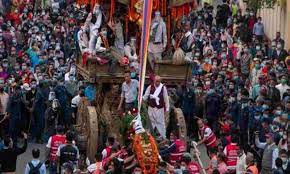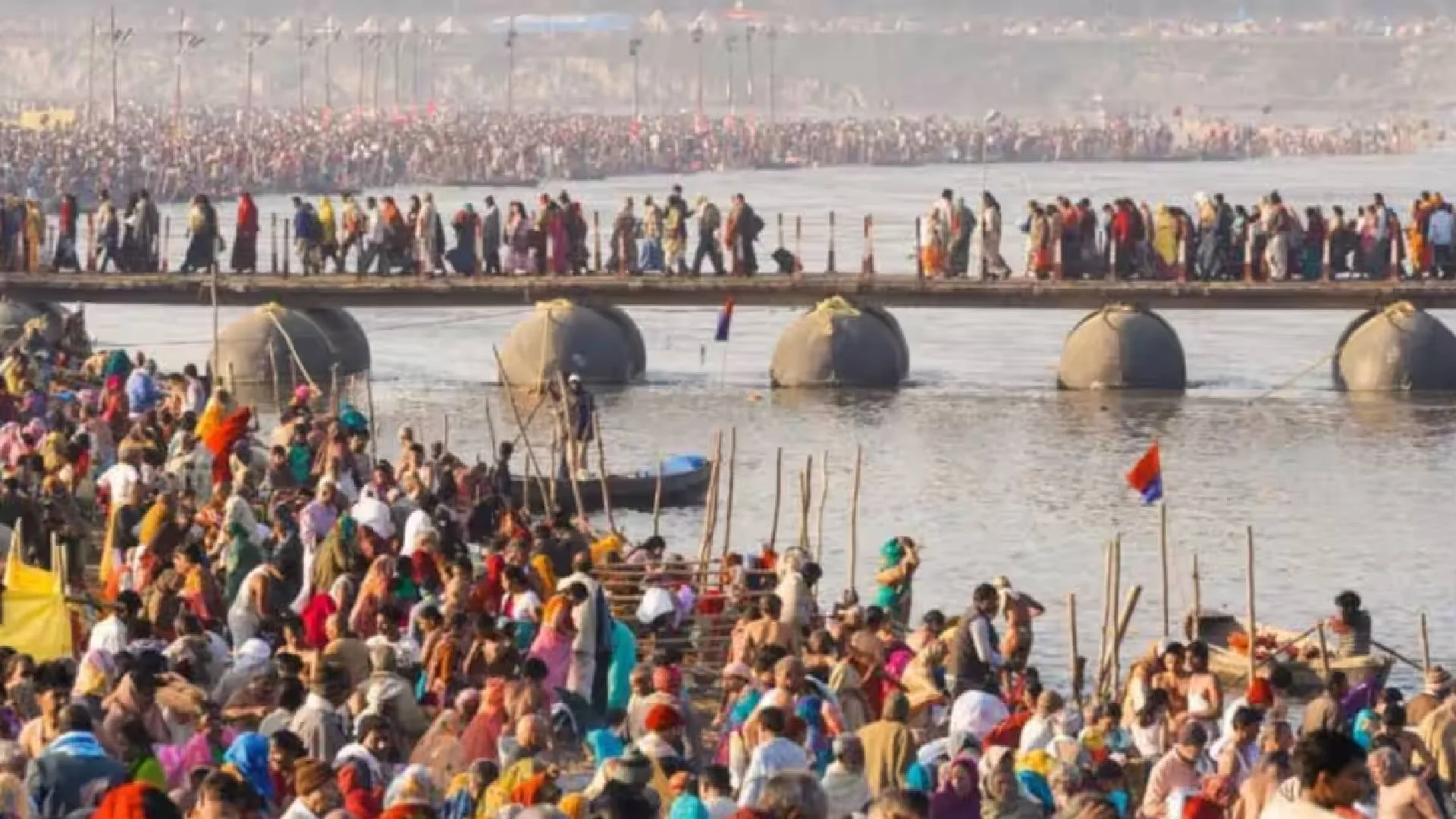The festivity is back again in Nepal as Rato Machindranath, the Red God of the Himalayan nation on Friday ascended the sky-scrapping chariot which would tour around the city for months.
The chariot festival of Rato Machindranath which rolls out unto the city depends highly on astrology. The Red God locally known as “Bunga Dugh” in Newa: fraternity which means “God of Rain and Harvest” is the longest Jatra in Nepal which runs on for months. Speaking to ANI, Bikesh Dangol, Devotee, Rato Machindranath Jatra, Lalitpur in Nepal said, “If the chariot is pulled on a daily basis then it would be completed in about 10 days. On the first day it is taken to Ga: Bahal, then to Sundhara and then to Lagankhel after which it is taken to Iti tole and Thati tole. After the astrologers decide on an auspicious time, then the chariot is taken to Jawalakhel, and upon reaching there another festival of Bhoto Jatra is observed after four days.
Clad in red coloured jackets, dozens of members from the Newa: community spend about two weeks to prepare the sky-notching chariot which indeed is the biggest chariot that is built on an annual basis in the Himalayan Nation.
Bikesh Dangol, Devotee, Rato Machindranath Jatra said, “It is called the biggest and longest-running Jatra of Nepal. When we talk about the height of chariot then it measures 65 feet and during the celebration, another Jatra- the Chakajya also is observed which makes it the festival of three cities- Kathmandu, Bhaktapur and Lalitpur.
“When the chariot is pulled from Pulchowk to Ga: Bahal then it is regarded as the festival of Kathmandu, when it reaches Sundhara then it is the festival of Bhaktapur and rolling up to Lagankhel where a coconut is thrown from the top of the chariot then it is the festival of Lalitpur,” Bikesh Dangol told the sources.
The chariot constructed annually basically uses wooden beams, and thumped adjustments to the shrine sanctum without using a single nail. It takes about two weeks for the Newa: community to build it on and is given a final touch-up with decorative before the chairing of the lord in the chariot.
Observed in the ancient town of Lalitpur, the sky-scrapping chariot goes around the city after four days of the ascension of God. After spending 4 days on the roadside constructed chariot, it is pulled to Ga:Bahal and rested for one day, after that it is pulled onto Sundhara and Mangalbazar where it is kept on for one day each.
Then after it is pulled on further to Lagankhel where it is kept on for one day. During that time, a day has been separated for women only to pull on the chariot and take it to E: thiha and then making astronomical calculations it is pulled onto Jawalakhel.
It might take more days as the priests have to look onto the auspicious times, sometimes it is holed up there for 10-15 days or even one month or more. After driving it to Jawalakhel and marking on the ‘Bhoto Jatra’ attended by the head-of-state and then the lord is taken back to Bungmati (an ancient historical town of Lalitpur) and the chariot is dismantled.
The chariot procession of Rato Machindranath always starts by end of April or early May, however, the COVID-19 pandemic pushed back the procession multiple times in earlier years.
















